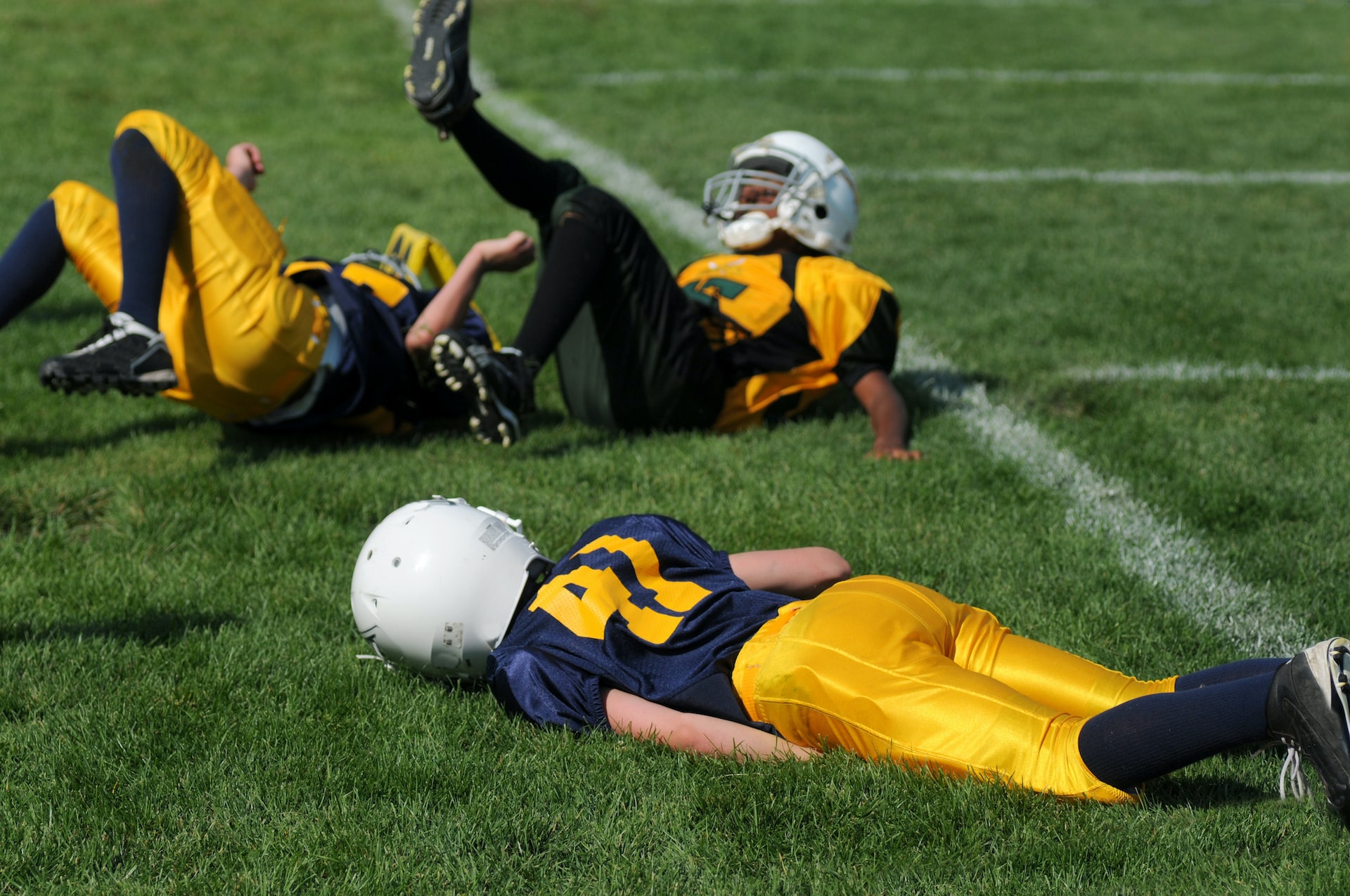
Their stories and willingness to publicly share the toughest of decisions deserve recognition, making a major contribution to Australia’s “concussion smart” future. (File photo: Ben Hershey/Unsplash)
In recent years, a growing number of professional athletes are medically retiring from sport, particularly in some of Australia’s most popular football codes.
In April, Collingwood player Nathan Murphy, 24, medically retired due to advice about his concussion history. He follows 28-year-old Angus Brayshaw as another high-profile, mid-career player who announced his retirement on medical grounds this year.
In other codes, Cronulla Sharks co-captain Dale Finucane retired last month due to concussion concerns. He joined other NRL players Boyd Cordner, Jake Friend and Andrew Davey in retiring on medical advice or by personal choice.
Rising Australian cricket star Will Pucovksi, with a long history of concussions, is currently working with medical experts from in the sport to determine his playing future.
Medical retirement can happen at any level of any sport, but media and public attention tends to focus on the elite codes, drawing attention to the heightened public awareness of concussion and concerns around the cumulative effects of repeated head impacts and links to longer term neurological conditions.
But what is the process these players go through in reaching this decision? Is there any room for pushback should a player want to continue to play despite being advised otherwise?
Living the dream
We first need to understand the context of the sporting field as a workplace. These are performance-driven athletes with identities shaped by the pathways they take to reach the top.
To illustrate, the annual AFL draft involves around 1,500 young hopefuls trying out for selection, with less than 10% getting an offer to join professional ranks.
So a measure of success is being selected and employed by a team and then staying on a club’s active list for the longest period possible.
This brings us to the other point of difference – the very short average length of a player’s career at the elite level.
According to the AFL Players’ Association (AFLPA), the average length of a footballer’s professional career is less than six years.
So in terms of financial rewards and sponsorship opportunities, this means making a living from perusing this dream is much shorter than the average worker, and athletes often do everything they can to keep playing – occasionally risking their health to do so. Sociologists call this the “sport ethic”, involving risk, pain and injury tolerance to win at all costs.
Sorry, but the dream might be over
With this context, receiving medical advice recommending early retirement must be devastating for an athlete.
Both the AFLPA and the Rugby League Players Association (RLPA) have developed support mechanisms to help athletes navigate the process in the event that retirement may be on the cards, recognising the toll it can take on a player’s mental health and wellbeing.
But what are the steps in the lead-up to a medical decision?
The player’s first point of contact is typically a club doctor or other club-appointed health professionals. These health professionals are closely involved in assessing a player’s fitness and use league-approved concussion and head injury assessment diagnostic tools and processes.
In 2019, the AFL adopted a process in which a panel of three medical specialists assesses a player and makes a recommendation to assist decision-making about future participation.
Triggered by a referral from the club doctor, each panel member examines and assesses the athlete. They see the player, review all notes from the team doctor, along with the player’s medical history, reports and records, including scans and test results.
If required, further testing is done.
The panel aims to reach a medical consensus – all experts agreeing on the outcome, either recommending retirement or a follow-up. A consensus is important as it reduces the risk of an athlete “shopping around” to get a favourable result if they want to continue playing.
The model is similar to that in workers’ compensation assessments but instead of assessing compensation, it’s about assessing fitness to continue playing.
Medical and legal risks of continuing
The AFL’s medical expert panel provides a recommendation to the player, but the ultimate decision rests with the athlete.
If the athlete chooses to ignore medical advice and continue to play, then there could be legal factors to consider for the player, their club and the club doctor.
As an employee of a club, an athlete is bound to comply with the legal obligations under the player’s employment contract and the collective bargaining agreement.
A common obligation involves being fit to play and an obligation to follow medical advice from club doctors and club-appointed health professionals. If a player elects to continue to play despite medical advice to the contrary, they could be risking a breach of contract.
In the context of the club as an employer, workplace-related issues could arise in regard to obligations of health and safety processes and compliance.
For club doctors and clinicians, Michael Turner – medical director of The International Concussion and Head Injury Research Foundation – and colleagues developed a framework to assist clinician decision-making in complex cases.
But another legal issue to consider is the assumption of the risk – if a player ignores medical advice, they bear the responsibility and assume the risk of harm.
Creating a ‘concussion smart’ future
Murphy and the other brave players who tell their stories raise public awareness and help people understand that these are serious matters.
Instead of wearing a “badge on honour” to play on through injuries at the expense of future health, these athletes are playing a pivotal role in reshaping the narrative.
Their stories and willingness to publicly share the toughest of decisions deserve recognition, making a major contribution to Australia’s “concussion smart” future.![]()
Annette Greenhow, Assistant Professor, Faculty of Law, Bond University
This article is republished from The Conversation under a Creative Commons license. Read the original article.





















